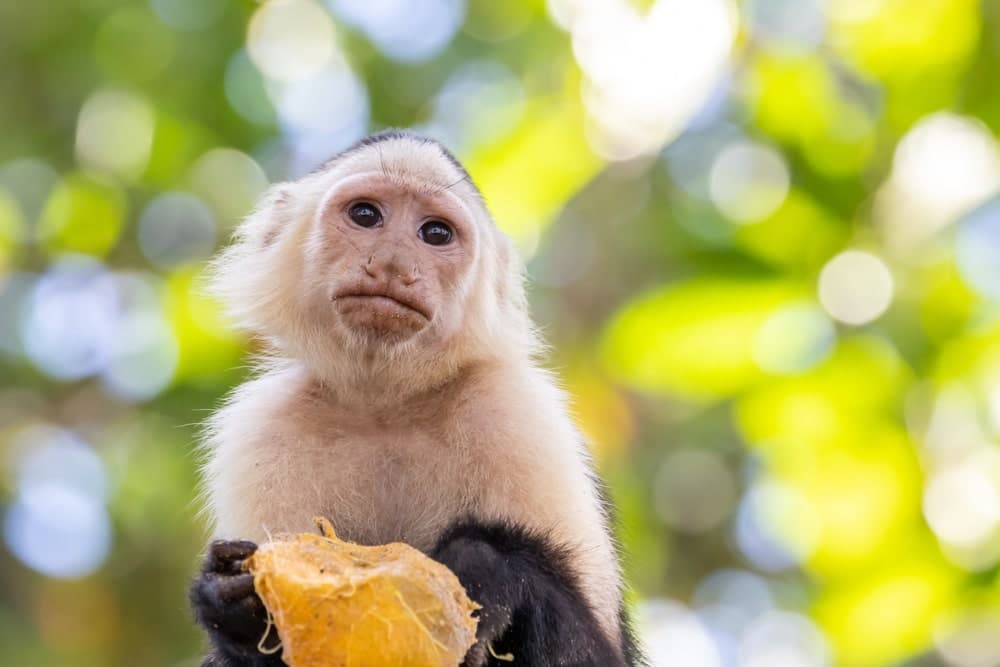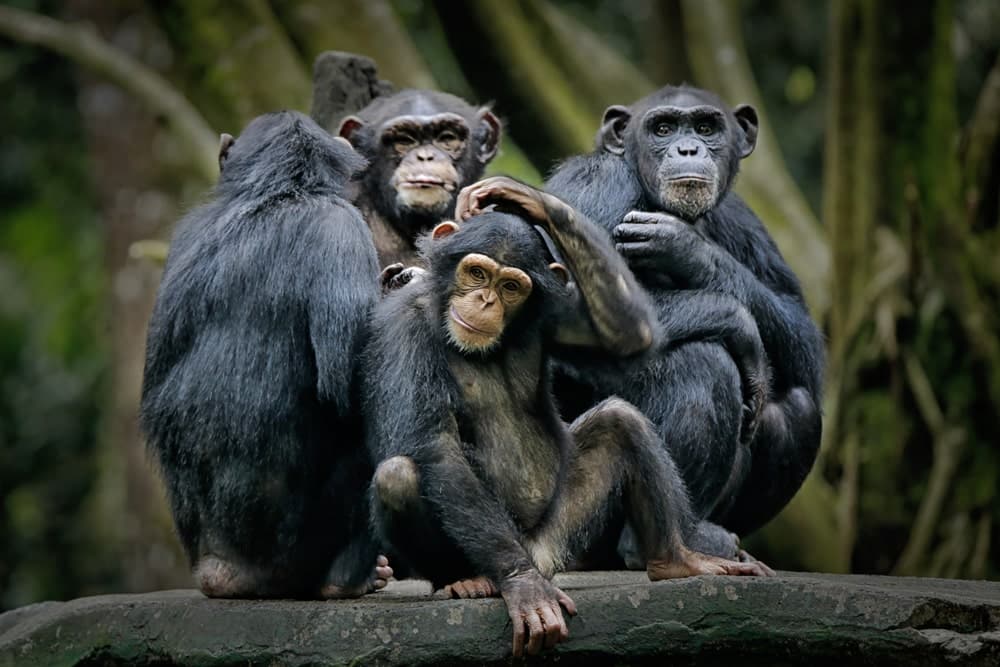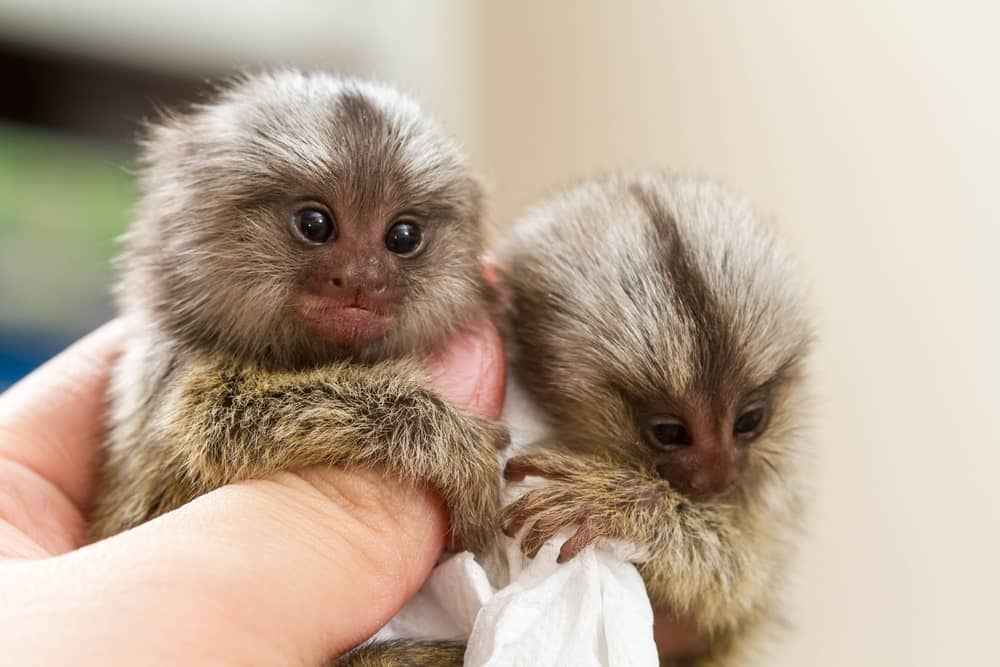These facts about monkeys will surprise you!
Monkeys are primates found primarily in tropical rainforests. Most of them are arboreal, though some, like baboons and macaques, are terrestrial. New World monkeys, like tamarins, capuchins, and spider monkeys, are found in Mexico and Central and South America, while Old World monkeys, including colobus, gelada, and baboons, are found in Africa and Asia. Many species of monkeys are endangered.
Monkeys have large brains and are known for their intelligence and inquisitiveness. Brain development, combined with well-developed vision and the freeing of the hands, allows them a great deal of activity. These facts about monkeys aren’t something new, though.
Most monkeys are good at learning from experience and solving complex problems, but they don’t quite reach the cognitive levels of great apes. In this article, we’ll round up some of the most interesting facts about monkeys.
Let’s get started!

1. Capuchins are smart with tools
This is one of the most surprising and interesting facts about monkeys. Capuchins were one of the first primates other than apes to be analyzed, engaging in highly skilled tool use in the wild. Archaeologists who studied the use of capuchin stone tools say that wild bearded capuchins have been using tools for over 3,000 years. During that time, this ability of capuchins evolved—a skill previously only attributed to humans.
The most common example of skilled tool use in capuchins is the way they crack open nuts. These monkeys place the nuts on pitted stone “anvils” and hit them hard with another rock.
According to studies, capuchins adjusted the size of their tools—using smaller rocks for softer nuts or for seeds—over time. Another impressive example of the intelligence of capuchins is the way they use crushed-up millipedes, rubbing them on their bodies to repel mosquitoes and other insects.
2. There’s only one species of wild monkey in Europe
One of the lesser-known facts about monkeys is that Europe has only one wild nonhuman primate. Barbary macaques have the distinction of being the only wild monkey in Europe, and while they inhabit the mountains of Algeria and Morocco, a small population of about 200 individuals was brought and is maintained in Gibraltar.
According to the DNA analysis, these macaques, which have been in Gibraltar for a couple of centuries, were originally imported from Northern America.
Considered to be at risk of extinction in all parts of their range, the population of Barbary macaques has seen a sharp decline of more than 50% over a period of 24 years.
3. They use grooming to strengthen relationships
For monkeys, picking insects, dirt, and other debris off their companions is far from a personal hygiene habit—it’s an expression of love and affection. One of the most impressive facts about monkeys is that they engage in certain behaviors to express, build, and strengthen relationships.
Grooming rituals not only keep them healthy, but they also strengthen their social bonds and, ultimately, make them feel more comfortable. Experts have found that when vervet monkeys comb each other’s pelts, the fur becomes thicker and fluffier. In fact, after full grooming, the insulation value of the vervet monkey’s pelt boosts by as much as 50%.
4. Chimpanzees have demonstrated signs of Alzheimer’s
No. 4 on our list of facts about monkeys is something that may demonstrate the fact that these primates share more treats with humans than we thought.
A team of scientists analyzed the preserved brains of 20 chimpanzees that passed away between the ages of 37 and 62, focusing especially on the regions that are damaged by Alzheimer’s. They discovered that four of the 20 brains showed plaque made of a protein called amyloid-β and accumulations of a protein called tau—both hallmarks of Alzheimer’s in humans.
Moreover, all 20 brains showed signs of “pre-tangles.” Experts in this study didn’t have records of any behavioral abnormalities in the chimps, but the presence of the plaque and the proteins indicate that there would have been a chance that the chimps experienced such changes.
If you want to learn more about these primates, here’s a real story about a woman who got to know an amazing group of wild chimpanzees.
Keep reading to discover other interesting facts about monkeys!

5. Not all primates are monkeys
The term “monkey” is sometimes used as a universal term for every animal in the primate family, but the truth is that monkeys live on completely different branches of the evolutionary tree from both apes (i.e., gorillas, chimpanzees, and humans) and prosimians (i.e., lorises, tarsiers, and lemurs).
One of the most interesting facts about monkeys is something that differentiates them from other primates: their tail. While most monkeys have tails, apes and other primates don’t. Apes also tend to be larger than monkeys and, due to their larger brains, more intelligent.
6. The color of a bald Uakari’s face may say something about its health
Bald Uakari are known for their striking red faces. Experts have discovered anecdotal evidence indicating that the brighter the face, the healthier these New World monkeys are. Those that are ill—often with malaria, which is common in their rainforest habitat—exhibit a paler skin tone.
Moreover, these monkeys also boast excellent color vision, which helps them figure out which individuals are best-suited and healthiest for mating.
7. Chimpanzees have stable personality types
No. 7 on our list of facts about monkeys confirms the idea that these primates, like humans, have personalities too. In 1973, a group of scientists described the personalities of 24 chimpanzees housed at Gombe National Park using the Emotions Profile Index.
The index assigns scores based on eight major personalities: aggressive, timid, gregarious, depressed, controlled, dyscontrolled, trustful, and distrustful.
Usually, females showed more trusting natures,while males were more gregarious. Outliers do exist, including one female chimpanzee named Passion, who was rated very highly as aggressive, depressed, and distrustful. Passion and her daughter were also found to kill four infants belonging to another female.
Experts came back to the park in 2010 to evaluate the personalities of 128 chimps using 24 different metrics. They discovered that personalities remained stable among chimpanzees regardless of whether they had been in the wild or kept in captivity.
This is definitely one of the most interesting facts about monkeys!
8. Monkeys eat far more than just bananas
Most of us imagine a banana when thinking about a monkey eating, but their diets are way more diverse than that. Monkeys are mostly omnivorous, eating leaves, fruits, nuts, vegetables, flowers, roots, bark, birds, rodents, invertebrates, and more—just about whatever is available in their habitat.
One of the most surprising facts about monkeys is that most of these primates have likely never tasted a banana before. That’s because bananas are an agricultural crop, so they’re not commonly found in the wild.

9. Pygmy marmosets are the world’s smallest monkeys
Native to the Amazon Basin of South America, this small New World monkey is about five inches long and weighs around four ounces at adulthood. Pygmy marmosets live in groups of two to six individuals, and monogamous pairs share parental duties. It’s pretty interesting, isn’t it?
Females give birth to one to three babies, which often include fraternal twins. Although the pygmy marmoset is the tiniest monkey, it isn’t the smallest living primate. That would be Madame Berthe’s mouse lemur.
10. Only New World monkeys have prehensile tails
Last but not least on our list of facts about monkeys is their tails. Only New World monkeys in the Atelidae family, like spider monkeys and howler monkeys, and capuchins in the Cebidae family, have prehensile tails.
These primates live in the tropical regions of Mexico and South and Central America. Old World monkeys, which live in Africa and Asia, have tails, but they aren’t prehensile.
If you liked our article on facts about monkeys, you may also want to read 12 Peculiar Animals You Didn’t Know Existed.











